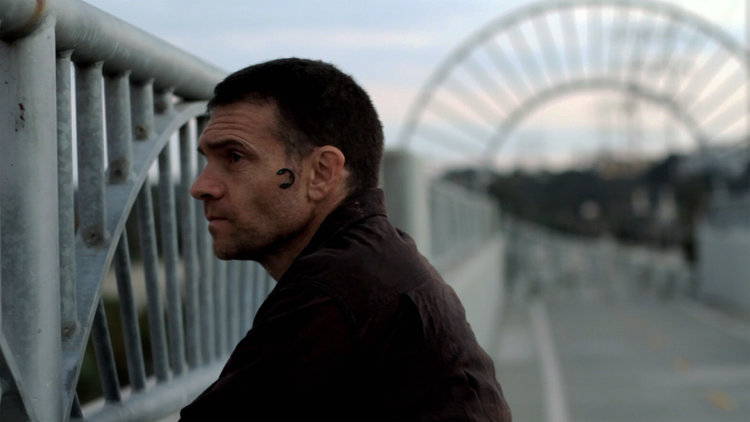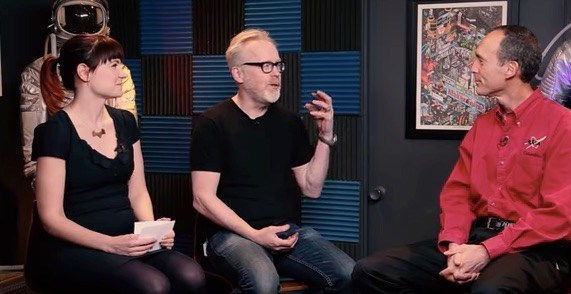 Katniss Everdeen has grown up in poverty, been yanked away from her life and forced to fight against other children to the death, become a stooge for the corrupt government behind said child gladiatorial combat and been thrown back into the arena again to quell her growing symbolism for revolutionary movements and she has had enough. Unfortunately the revolution will not yet be televised as “The Hunger Games: Mockingjay – Part 1” – the third film of Suzanne Collins three-book action sci-fi series – is not the end but, to mangle Churchill, just the beginning and some of the middle of the end. The feeling of anti-climax pervading it is almost unavoidable as a result, despite strong work from director Francis Lawrence and his talented cast. Which doesn’t make it a lost cause by any stretch of the imagination, there is much to admire in Lawrence’s second (or is that one and a half?) appearance at the “Games,” but the lack of razzle dazzle or near-death induced tension and drama may give pause to those who have tuned in for precisely those sections before.
Katniss Everdeen has grown up in poverty, been yanked away from her life and forced to fight against other children to the death, become a stooge for the corrupt government behind said child gladiatorial combat and been thrown back into the arena again to quell her growing symbolism for revolutionary movements and she has had enough. Unfortunately the revolution will not yet be televised as “The Hunger Games: Mockingjay – Part 1” – the third film of Suzanne Collins three-book action sci-fi series – is not the end but, to mangle Churchill, just the beginning and some of the middle of the end. The feeling of anti-climax pervading it is almost unavoidable as a result, despite strong work from director Francis Lawrence and his talented cast. Which doesn’t make it a lost cause by any stretch of the imagination, there is much to admire in Lawrence’s second (or is that one and a half?) appearance at the “Games,” but the lack of razzle dazzle or near-death induced tension and drama may give pause to those who have tuned in for precisely those sections before.
 Rescued at the end of “Catching Fire” by the literal underground revolutionary movement (headquartered in the fabled long destroyed District 13) Katniss (Jennifer Lawrence) is finally free from creating agitprop for the tyrannical President Snow just in time to create agitprop for the rising rebellion and its stern but fair President Coin (Moore). While the structure of the previous films has been largely replicated – Katniss still spends time hunting at home followed by a struggle to elucidate her real values through the lens of the PR machine she has been thrust into – they have now been inverted, casting new light and new depths onto the maturing franchise. Now her home is rubble, destroyed in the opening days of the rebellion, and the PR machine run by turncoat Plutarch Heavensbee (Hoffman) is focused on rousing the people to action rather than keeping them asleep, making Katniss the face of the revolution she was trying to avoid becoming. Nor is it just Katniss who benefits as the inversion moves several background characters, notably Liam Hemsworth’s Gale, to the forefront as well as opening up the world beyond the Sun King-type decadence of the Capital. The screenplay by Danny Strong and Paul Craig follows in the footsteps of the rest of the series, delving into the psychological ramifications of events on the characters, watching as the weight of what they’re going through changes them and not always for the better. The character’s return to the destroyed District 13 showcases the change from the hopeful young people of the first film (and the change in how they are handled) and the power Katniss has developed a symbol when she performs a haunting folk song summing up a mixture of hope and fatalism. It’s simpler and more powerful than assortment of flaming costumes or crazy wigs have yet managed.
Rescued at the end of “Catching Fire” by the literal underground revolutionary movement (headquartered in the fabled long destroyed District 13) Katniss (Jennifer Lawrence) is finally free from creating agitprop for the tyrannical President Snow just in time to create agitprop for the rising rebellion and its stern but fair President Coin (Moore). While the structure of the previous films has been largely replicated – Katniss still spends time hunting at home followed by a struggle to elucidate her real values through the lens of the PR machine she has been thrust into – they have now been inverted, casting new light and new depths onto the maturing franchise. Now her home is rubble, destroyed in the opening days of the rebellion, and the PR machine run by turncoat Plutarch Heavensbee (Hoffman) is focused on rousing the people to action rather than keeping them asleep, making Katniss the face of the revolution she was trying to avoid becoming. Nor is it just Katniss who benefits as the inversion moves several background characters, notably Liam Hemsworth’s Gale, to the forefront as well as opening up the world beyond the Sun King-type decadence of the Capital. The screenplay by Danny Strong and Paul Craig follows in the footsteps of the rest of the series, delving into the psychological ramifications of events on the characters, watching as the weight of what they’re going through changes them and not always for the better. The character’s return to the destroyed District 13 showcases the change from the hopeful young people of the first film (and the change in how they are handled) and the power Katniss has developed a symbol when she performs a haunting folk song summing up a mixture of hope and fatalism. It’s simpler and more powerful than assortment of flaming costumes or crazy wigs have yet managed.
 Unfortunately those desires run hard into the wall created by the splitting of the films, which requires Katniss (and her perspective) to be on the sidelines much of the time, leaving the audience viewing events with no emotional touchstone or surrogate or worse simply being told about them after the fact. Lawrence and company work hard to develop set pieces with some success, from an action filled visit to the front lines to the tense waiting game the rebels play in their bunkers against bombers from the Capital like World War II era British citizens hunkering down for the Blitz, but it’s hard to disguise the fact that Lawrence herself is more of an observer than a participant as the PR begins to work, spurring the long trampled rural populace to begin fighting back against the oppressive future one-percenters in a growing guerilla war.
Unfortunately those desires run hard into the wall created by the splitting of the films, which requires Katniss (and her perspective) to be on the sidelines much of the time, leaving the audience viewing events with no emotional touchstone or surrogate or worse simply being told about them after the fact. Lawrence and company work hard to develop set pieces with some success, from an action filled visit to the front lines to the tense waiting game the rebels play in their bunkers against bombers from the Capital like World War II era British citizens hunkering down for the Blitz, but it’s hard to disguise the fact that Lawrence herself is more of an observer than a participant as the PR begins to work, spurring the long trampled rural populace to begin fighting back against the oppressive future one-percenters in a growing guerilla war.
 As hard as they work, though, it’s also impossible to disguise the fact that this is still the set up section of a film series where the set up section has tended to be the longest and slowest (typically with some of the least interesting high school type interaction). One of the benefits of literary adaptation is the distillation of the source material; the careful pruning to bring out the essential nature of the story with less of the digression prose fiction can handle better. By side-stepping that old rule, the filmmakers have stretched out their narrative as far as they can; desperately trying to fill one minute to the next in-between the action beats. Much of this filler ends up being exposition (it’s the nature of the beast after all) but much of it is also space for more subtle character development than we’ve gotten before, particularly among Plutarch and Coin and the subtle ways the underground movement begins to resemble the corrupt government it is trying to replace. And none of it can disguise the fact that the lack of an ending or even suitable cliffhanger due to the films desire to remain as close to the original material as possible despite it never being designed to be cut in half this way.
As hard as they work, though, it’s also impossible to disguise the fact that this is still the set up section of a film series where the set up section has tended to be the longest and slowest (typically with some of the least interesting high school type interaction). One of the benefits of literary adaptation is the distillation of the source material; the careful pruning to bring out the essential nature of the story with less of the digression prose fiction can handle better. By side-stepping that old rule, the filmmakers have stretched out their narrative as far as they can; desperately trying to fill one minute to the next in-between the action beats. Much of this filler ends up being exposition (it’s the nature of the beast after all) but much of it is also space for more subtle character development than we’ve gotten before, particularly among Plutarch and Coin and the subtle ways the underground movement begins to resemble the corrupt government it is trying to replace. And none of it can disguise the fact that the lack of an ending or even suitable cliffhanger due to the films desire to remain as close to the original material as possible despite it never being designed to be cut in half this way.
And despite all the new space for sitting down and unloading, much of the available room is given to new characters like Coin and hotshot director Cressida (Dormer), leaving old favorites like Haymitch as little more than cameos. The beginning of what will probably be a pretty good film, it’s impossible to say what it is until the second half emerges except for another example of how studios ultimately hurt their final product trying to string them out this way.











Recent Comments